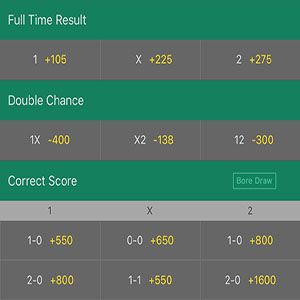
Are you intrigued by the world of sports betting but find the odds jargon confusing? Don’t worry; we’ve got you covered! In this beginner’s guide, we will explain the concept of odds, their different formats, and how to interpret them. By the end, you’ll be equipped with the knowledge to make informed betting decisions and maximize your chances of success.
Understanding Odds: The Basics
Let’s start by understanding what odds actually represent. Essentially, odds indicate the likelihood of a particular outcome occurring in a sporting event. They help bookmakers determine the payouts on winning bets while ensuring their own profitability.
Odds can be represented in three primary formats: decimal, fractional, and moneyline. Each format serves the same purpose but presents the information differently. Let’s delve into them one by one.
1. Decimal Odds
Decimal odds are the most commonly used format worldwide, particularly in Europe and Australia. They are expressed as a decimal number, such as 2.50 or 1.80.
To calculate your potential profit, simply multiply your bet amount by the decimal odds. For example, if you wager $100 on a team with odds of 2.50, your potential profit would be $250.
2. Fractional Odds
Fractional odds, as the name suggests, are represented as fractions, like 3/2 or 5/4. These odds are widely used in the United Kingdom.
The first number in the fraction represents the potential profit if you bet the second number. For instance, if you bet $100 on odds of 3/2, your potential profit would be $150.
3. Moneyline Odds
Moneyline odds, popular in the United States, are presented as positive or negative numbers, such as +200 or -150. Positive numbers indicate the potential profit on a $100 bet, while negative numbers represent the amount you must wager to win $100.
For example, if you see odds of +200, a bet of $100 could potentially yield a $200 profit. Conversely, odds of -150 would require you to bet $150 to win $100.
Interpreting Odds and Probability
Now that you grasp the different odds formats, it’s essential to understand how they relate to probability. By estimating the implied probability within the odds, you can determine the perceived chances of an outcome.
To calculate the implied probability for decimal odds, divide 1 by the decimal value and multiply by 100. For instance, if the odds are 2.50, the formula would be (1 / 2.50) * 100, resulting in a 40% implied probability.
Fractional odds are relatively intuitive. If the odds are 3/2, divide the second number by the sum of both numbers (2 + 3), giving us a 40% implied probability.
Moneyline odds of +200 can be converted into an implied probability by dividing 100 by the sum of 100 and the odds value (e.g., 100 / 300), which equals roughly 33.3%.
The Role of Odds in Betting
Now that you can interpret odds and understand their implied probability, you might be wondering how to employ this knowledge effectively.
Generally, odds help determine the payout you might receive if your bet is successful and represent the risk associated with a particular selection. Higher odds imply a lower probability of winning but offer higher potential returns. Conversely, lower odds suggest a higher probability but lower potential winnings.
Betting on the underdog, i.e., a selection with higher odds, may be riskier but can be more rewarding. However, analyzing the implied probability is crucial to determine if the odds truly reflect the chances of an outcome, as bookmakers aim to balance their books and may manipulate odds accordingly.
Conclusion
Congratulations! You are now equipped with a solid understanding of odds and how to interpret them in sports betting. Whether you come across decimal, fractional, or moneyline odds, you will be able to calculate potential profits and gauge the probability of an outcome.
Keep in mind that successful betting involves diligent research, analysis, and a disciplined approach. Now that you have unlocked the odds mysteries, enjoy the thrill of sports betting responsibly and make well-informed decisions to enhance your chances of success.